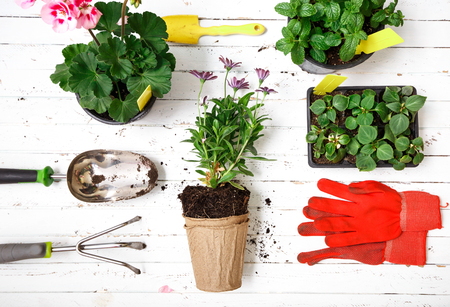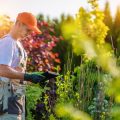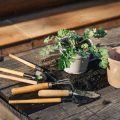1. Planning Your Garden Space
Starting a garden from scratch doesn’t have to break the bank. With a little planning, you can create a thriving green space that fits your budget and lifestyle. The first step is choosing the right location for your garden, understanding your sunlight and soil needs, and deciding what type of garden works best for your space.
Choosing the Right Location
Look around your yard, balcony, or patio to find a spot that gets enough sunlight and is easy to access. Most vegetables and flowers need at least 6 hours of direct sunlight each day. If youre working with limited space, like an apartment balcony or small backyard, container gardening might be your best option.
Consider These Factors When Selecting a Spot:
| Factor | Why It Matters |
|---|---|
| Sunlight Exposure | Most plants need full sun (6+ hours/day) to thrive. |
| Water Access | A nearby hose or water source makes watering easier. |
| Soil Quality | Healthy, well-draining soil promotes plant growth. |
| Protection from Wind | Too much wind can damage plants or dry out soil quickly. |
| Convenience | A garden close to your home is more likely to be cared for regularly. |
Understanding Sunlight and Soil Needs
Before planting anything, observe how much sun different areas of your yard receive throughout the day. You can even use a sunlight calculator app if needed. Next, check your soil type by grabbing a handful—sandy soil feels gritty, clay feels sticky, and loam feels crumbly and balanced. Most plants prefer loamy soil with good drainage.
Quick Soil Type Guide:
| Soil Type | Description | Common Fixes |
|---|---|---|
| Sandy | Drains too fast; low nutrients | Add compost or organic matter |
| Clay | Poor drainage; compacted easily | Add sand and compost for better texture |
| Loam | Ideal texture; holds moisture well | No major changes needed; maintain with compost |
Selecting the Right Garden Type for Your Lifestyle
Your available space and personal schedule will influence what kind of garden suits you best. Whether youre looking to grow herbs on a windowsill or start a full vegetable patch in your backyard, theres an option that fits.
Popular Garden Types:
- Container Garden: Perfect for patios, balconies, or renters. Easy to manage and move.
- Raised Bed Garden: Great for beginners; allows better control over soil quality and drainage.
- In-Ground Garden: Ideal for larger spaces but may require more initial work to prep the soil.
- Vertical Garden: Best for tight spaces; uses trellises or hanging pots to grow upward.
- Herb Garden: Low-maintenance and useful for cooking; can be grown indoors or outdoors.
Take some time to walk through your outdoor area, take notes on sun patterns, test your soil if possible, and think about how much time you realistically have each week to tend your garden. This thoughtful planning will set you up for success as you move forward with your budget-friendly gardening journey.
2. Setting a Realistic Budget
Before you start digging and planting, it’s important to understand what starting a garden might cost—and how to keep those costs low. Creating a realistic budget will help you avoid overspending and stay focused on what truly matters: growing your own little green space without financial stress.
Understand the Key Expenses
Gardening doesn’t have to be expensive, but there are some basic costs you should be aware of. Heres a simple breakdown of common gardening expenses:
| Item | Estimated Cost | Notes |
|---|---|---|
| Seeds or Starter Plants | $1 – $5 per packet or plant | Cheaper when bought in bulk or from local swaps |
| Soil and Compost | $5 – $15 per bag | Costs vary depending on quality and quantity |
| Containers or Raised Beds | $0 – $50+ | You can repurpose items like buckets, crates, or old drawers |
| Basic Tools (trowel, gloves, watering can) | $10 – $30 | Look for used tools at garage sales or thrift stores |
| Watering Costs | Varies | Collect rainwater to save on your water bill |
Start Small and Grow Over Time
If youre new to gardening, its wise to begin with just a few plants. A small container garden on your patio or balcony can be an excellent starting point. This way, you’ll learn as you go and avoid spending money on things you may not need right away.
Use What You Already Have
You’d be surprised how many items around your home can double as gardening supplies. Here are some ideas:
- Egg cartons: Use them to start seedlings.
- Mason jars or tin cans: Great for herbs and small plants.
- Spoons and forks: Can be used as mini garden tools.
- Laundry baskets: Lined with landscape fabric, they make great planters.
Look for Free or Low-Cost Resources
You don’t always have to buy everything new. Check local community boards, Facebook Marketplace, or neighborhood apps like Nextdoor for free soil, pots, seeds, or tools. Many gardeners love sharing their extras!
Tip:
If you’re planning a vegetable garden, choose plants that give a big harvest for little effort—like tomatoes, lettuce, or zucchini. They’re beginner-friendly and easy on the wallet.
Your Garden Budget Doesn’t Have to Be Big—Just Smart!
A thoughtful approach to budgeting helps ensure your garden stays fun and affordable. With creativity and resourcefulness, you’ll build something beautiful without breaking the bank.

3. Choosing the Right Plants
If youre just starting your garden from scratch and want to keep things budget-friendly, picking the right plants is key. Youll want to focus on plants that are beginner-friendly, low-maintenance, and suited for your local climate. Heres how to make smart choices that set your garden up for success without breaking the bank.
Know Your USDA Hardiness Zone
The first step in choosing the right plants is knowing your USDA hardiness zone. This zone tells you what kinds of plants can survive year-round in your area based on average minimum temperatures. You can find your zone by entering your ZIP code on the USDA Plant Hardiness Zone Map. Once you know your zone, you’ll be able to select plants that are more likely to thrive in your garden.
Pick Beginner-Friendly and Low-Maintenance Plants
As a beginner, its best to start with plants that don’t need a lot of attention. These types of plants are more forgiving if you forget to water them or if the soil isn’t perfect. Many also resist pests naturally, saving you money on treatments.
Examples of Easy-to-Grow Plants by Category:
| Plant Type | Examples | Why Theyre Great for Beginners |
|---|---|---|
| Vegetables | Lettuce, Radishes, Green Beans, Zucchini | Fast-growing, productive, and easy to manage |
| Herbs | Basil, Mint, Parsley, Chives | Grow well in containers; low-maintenance and useful in cooking |
| Flowers | Marigolds, Sunflowers, Zinnias, Black-eyed Susans | Tolerate poor soil; attract pollinators; bright and cheerful blooms |
| Shrubs & Perennials | Lavender, Coneflower (Echinacea), Hostas (for shade) | Drought-tolerant; come back every year; minimal care needed |
Select Plants That Match Your Climate and Sunlight Conditions
A plant might be labeled as “easy,” but it still needs the right conditions to grow well. Pay attention to how much sunlight your space gets: full sun means 6+ hours per day; partial shade is about 3–6 hours; full shade is less than 3 hours. Choose plants that match those light conditions. Also look for varieties labeled as drought-resistant or cold-hardy depending on your local weather patterns.
Quick Tips:
- If youre gardening in a hot and dry area like Arizona or Nevada (Zones 8-10), try drought-tolerant plants like succulents or rosemary.
- If youre in a colder region like Minnesota or Maine (Zones 3-5), go for hardy perennials such as daylilies or peonies.
- If space is limited, container gardening with herbs or cherry tomatoes is a great way to start small.
Selecting the right plants will not only save you money by reducing waste and replacement costs—it’ll also make gardening much more enjoyable as you see your efforts pay off with healthy growth and beautiful results.
4. Gathering Affordable Tools and Materials
Starting a garden doesn’t mean you need to spend a fortune on fancy tools and equipment. With a little creativity and resourcefulness, you can gather everything you need without breaking the bank. Here’s how to find budget-friendly gardening tools and decide what’s truly essential for your new garden.
Shop Smart: Where to Find Budget-Friendly Tools
You don’t have to buy brand-new tools from big box stores. Many high-quality gardening tools can be found secondhand or at discounted prices if you know where to look:
- Garage Sales: Great for snagging gently used hand tools, pots, and even garden furniture.
- Thrift Stores: Check places like Goodwill or Habitat for Humanity ReStores for affordable finds.
- Online Marketplaces: Websites like Facebook Marketplace, Craigslist, and OfferUp often have local listings for used garden supplies.
- Community Swaps: Some neighborhoods host tool swaps where you can trade items with others.
- Dollar Stores: You may be surprised by the variety of basic gardening supplies available at dollar stores — think gloves, small hand tools, and seed trays.
Essential vs. Optional Gardening Supplies
When youre just starting out, it’s important to focus on the basics. Heres a breakdown of what you really need versus what can wait until later:
| Essential Tools & Supplies | Optional (Nice-to-Have) Items |
|---|---|
| Trowel (for digging small holes) | Kneeling pad |
| Garden gloves (protect your hands) | Decorative pots or planters |
| Watering can or hose | Compost bin (can DIY later) |
| Pruning shears (for trimming plants) | Garden cart or wheelbarrow |
| Seeds or starter plants | Irrigation system |
| Pots or containers (if not planting in-ground) | Trellises or plant supports |
DIY Hacks and Repurposing Ideas
If youre feeling crafty, there are plenty of ways to repurpose household items into useful garden tools:
- Milk jugs: Cut them into scoops or use as mini greenhouses.
- Shoe organizers: Hang them up for vertical herb gardens.
- Buckets and bins: Use old containers as makeshift planters.
- Spoons and forks: Can work as mini trowels or plant markers in a pinch.
A Quick Tip:
If youre unsure about an item, ask yourself: “Will this help me plant, water, or care for my garden efficiently?” If not, it can probably wait!
The key is to start simple with the basics and expand your tool collection over time as your garden grows. Stick with what works for your space, your budget, and your goals — and remember that creativity goes a long way in gardening!
5. Planting and Basic Maintenance
Now that youve prepared your garden bed and selected your plants, its time to get them into the ground and learn how to care for them. This step is where your garden truly comes to life! Heres a simple guide to planting and maintaining your budget-friendly garden.
Sowing Seeds vs. Transplanting Seedlings
Depending on what you’re growing, you can either sow seeds directly into the soil or transplant young seedlings.
Sowing Seeds
- Read the seed packet instructions carefully – they usually include details about depth, spacing, and sunlight needs.
- Create shallow rows in the soil using your finger or a small tool.
- Place seeds evenly according to spacing guidelines.
- Cover with soil and gently pat down. Water lightly afterward.
Transplanting Seedlings
- Dig a hole slightly larger than the root ball of the seedling.
- Remove the plant from its container, being careful not to damage the roots.
- Place it into the hole so that the top of the root ball is level with the soil surface.
- Fill in around the plant with soil and press gently to remove air pockets. Water well after planting.
Watering Schedule
A consistent watering schedule helps your plants grow strong and healthy. Here’s a basic guide:
| Plant Type | Watering Frequency | Best Time to Water |
|---|---|---|
| Vegetables (e.g., tomatoes, lettuce) | 2-3 times per week | Early morning |
| Drought-tolerant herbs (e.g., rosemary, thyme) | Once per week | Morning or late afternoon |
| Bedding flowers (e.g., marigolds, zinnias) | Every 2-3 days in hot weather | Mornings |
Avoid overwatering—check if the top inch of soil is dry before watering again. Using mulch can help retain moisture and reduce watering needs.
Basic Garden Care Tips
- Weeding: Remove weeds regularly by hand or with a small hoe to prevent competition for nutrients and water.
- Pest Control: Keep an eye out for pests like aphids or caterpillars. Use organic options like neem oil or insecticidal soap when needed.
- Trellising & Support: Use stakes or cages for plants like tomatoes or beans that need support as they grow.
- Disease Watch: Yellowing leaves or spots can signal disease—remove affected leaves promptly and avoid overhead watering to reduce risk.
Caring for your garden doesn’t have to be complicated. With just a little daily attention, youll keep your plants thriving and enjoy fresh produce or blooms all season long!
6. Sustaining and Growing Your Garden
Once your budget-friendly garden is up and running, it’s important to keep it thriving without breaking the bank. By learning how to compost at home, rotate your crops, and save seeds, you’ll not only save money in the long run but also build a more resilient and productive garden season after season.
Composting at Home
Composting is a natural way to recycle kitchen scraps and yard waste into nutrient-rich soil for your garden. It reduces landfill waste and cuts down the need to buy fertilizers.
What You Can Compost:
| Greens (Nitrogen-rich) | Browns (Carbon-rich) |
|---|---|
| Fruit & veggie scraps | Dried leaves |
| Coffee grounds | Cardboard |
| Grass clippings | Paper towels (unbleached) |
Tips for Easy Composting:
- Use a small bin or pile in your backyard.
- Turn your compost weekly to speed up decomposition.
- Avoid adding meat, dairy, or oily foods—they attract pests.
Crop Rotation for Healthy Soil
Certain plants use up specific nutrients from the soil, while others help replenish them. Rotating crops each season helps prevent nutrient depletion and reduces pest and disease problems.
Basic Crop Rotation Groups:
| Group | Examples |
|---|---|
| Leafy Greens | Lettuce, spinach, kale |
| Root Crops | Carrots, beets, radishes |
| Fruit-bearing Plants | Tomatoes, peppers, cucumbers |
| Legumes (Nitrogen-fixers) | Beans, peas |
A simple way to rotate crops is to divide your garden into four sections and move each group to a new section every year.
Saving Seeds for Next Season
Saving seeds from healthy plants lets you grow next year’s garden without buying new packets. Plus, over time your plants can become better adapted to your local environment.
Easy Plants to Start Saving Seeds From:
- Tomatoes: Scoop out seeds, rinse off pulp, dry on paper towels.
- Peppers: Remove seeds from ripe fruit, air-dry completely before storing.
- Lettuce: Let the plant bolt (flower), then collect dry seeds from seed heads.
- Beans/Peas: Leave pods on the plant until they dry out; shell and store seeds in envelopes.
Seed Storage Tips:
- Keep seeds in a cool, dry place—an airtight container works great.
- Label everything with the plant name and date collected.
- Avoid hybrid varieties if you want consistent results; choose heirloom or open-pollinated types instead.
Sustaining your garden through composting, crop rotation, and seed saving will not only reduce costs but also make gardening even more rewarding year after year.


